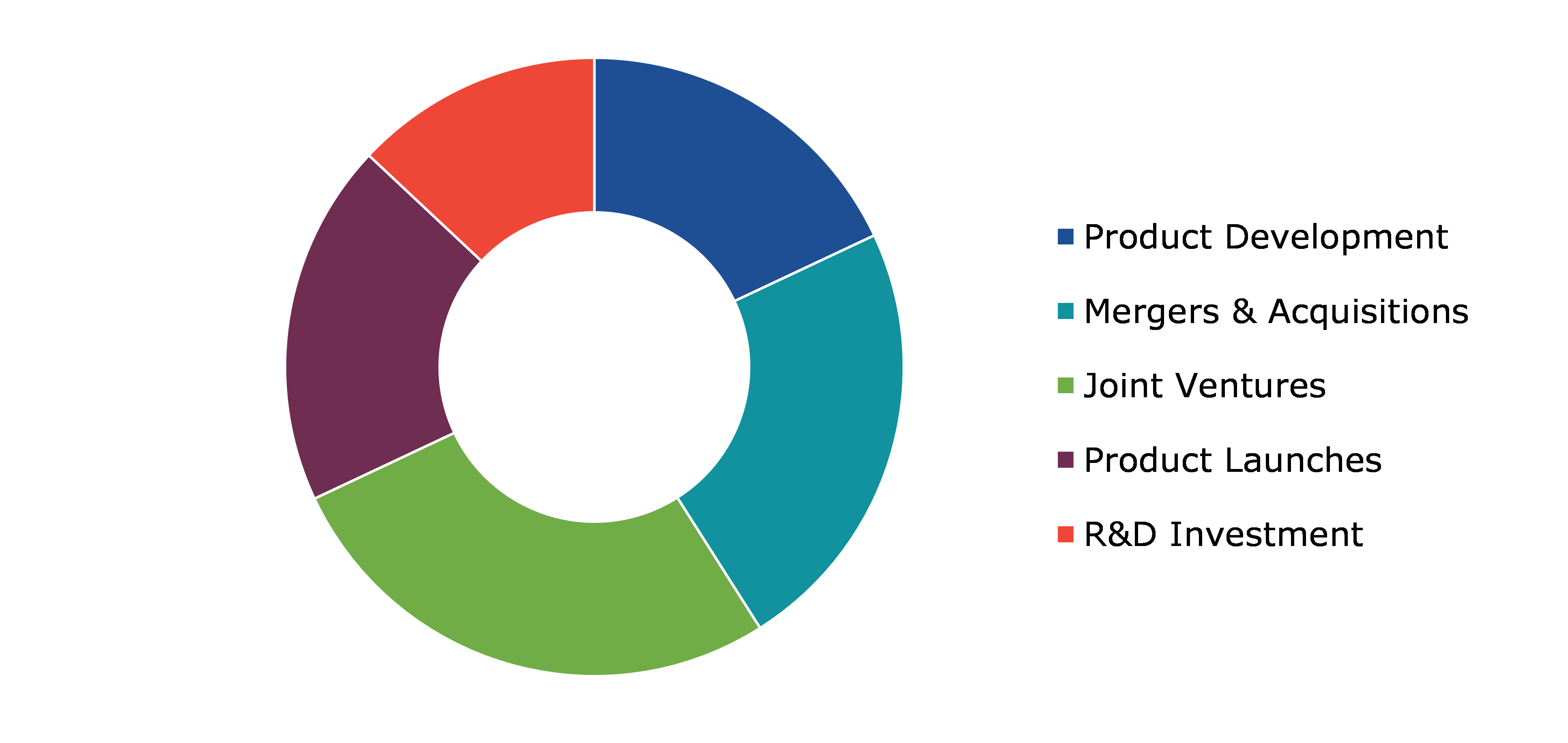Compressed Air Energy Storage Market Report
RA08615
Compressed Air Energy Storage Market by Method (Diabatic, Adiabatic, and Isothermal), Storage (Traditional CAES Storage and Liquid Gas CAES Storage), Application (Energy Management, Backup & Seasonal Reserves, and Renewable Integration), End-use Industry (Power Station, Distributed Energy System, and Automotive Power), and Regional Analysis (North America, Europe, Asia-Pacific, and LAMEA): Global Opportunity Analysis and Industry Forecast, 2022–2031
Global Compressed Air Energy Storage Market Analysis
The global Compressed Air Energy Storage Market Size was $3,995.4 million in 2021 and is predicted to grow with a CAGR of 23.6%, by generating a revenue of $31,827.7 million by 2031.
Global Compressed Air Energy Storage Market Synopsis
Compressed air energy storage (CAES) is an efficient energy storage technology in which the energy stored at one time can be used at another time. This technology can be widely used during off-peak and can be used to meet high energy demand during the peak load period. Compresses air energy storage market size can be attributed to the ability of CAES systems that offers effective and on-demand energy for its use across various industries such as power generation.
However, high cost involved in setting up compressed air energy storage plants is estimated to restrain the compressed air energy storage market share in the upcoming years. The cost involved in CAES comprises of complicated cooling systems, high self-discharge rate, and high cost involved in setting up underground storage intercoolers for dissipating heat.
The benefits associated with compressed air energy storage industry is projected to generate excellent opportunities in the market. The CAES technology offers excellent energy savings as it is used to enhance energy storage during peak periods. This technology helps the energy companies in offering sufficient energy for entire service for energy production during peak usage. These factors are anticipated to have positive impact on compressed air energy storage market outlook in the upcoming years.
According to regional analysis, the North America compressed air energy storage market accounted for a highest market share for compressed air energy storage majorly owing to the growing prevalence of parties and events across U.S., Canada, and Mexico.
Compressed Air Energy Storage Market Overview
Compressed air energy storage technology can be used for large-scale energy storage in which the compressed air is stored in pressurized storage tanks or in underground caverns. Additionally, the pressurized air is pumped into an enclosure with the help of a compressor, till the energy is utilized. The stored energy is then utilized that allows the air to expand by pushing the high-pressure air through the air for generating electricity.
COVID-19 Impact on Global Compressed Air Energy Storage Market
The impact of the COVID-19 pandemic has rippled through several industries causing social, economic, as well as political disruptions. The compressed air energy storage market demand was also negatively impacted during the pandemic. This was majorly owing to travel restrictions, and stay-at-home orders. The suspension of manufacturing and production plants due to shortage of labors, delay in the availability of raw materials has led to a negative impact on the compressed air energy storage market opportunities during the pandemic. The shipments of various components, such as pistons, electric motors, storage tanks, and others, involved in setting up CAES plants was delayed. This was majorly owing to the import-export restrictions, closed borders, and economic uncertainty. CAES technology requires huge capital investments, and it is governed by several government norms and regulations.
The healthcare facilities across the world had collapsed owing to drastic increase in the number of patients suffering from the novel coronavirus. Owing to the same, majority of government budgets were diverted towards strengthening of healthcare facilities across the world. Hence, the setup of CAES plants was temporarily halted or postponed. All these factors have negatively impacted the compressed air energy storage market growth during the pandemic.
Enhanced Air Quality and Improved System Stability to Drive the Market Growth
The global compressed air energy storage market provides enhanced air quality by lowering harmful carbon dioxide emissions. For instance, using adiabatic CAES, processes the carbon emissions can be reduced to zero. This helps in reducing the dependence on fossil-fuel powered energy grids. Hence, compressed air energy storage is an eco-friendly energy storage solution that can help in achieving net zero carbon emission goals. The use of CAES as supplemental energy storage offers power grid stability during the peak times of electricity use. This minimizes the load on electrical infrastructure thereby enhancing the energy reliability. Even for small-scale operations, this technology provides reliable and stable electricity production option. These factors are anticipated to propel the compressed air energy storage market size in the coming years.
To know more about global compressed air energy storage market drivers, get in touch with our analysts here.
Extensive Use of Natural Gas Associated with Compressed Air Energy Storage System to Restrain the Market Growth
Some of the limitations associated with CAES system is extensive use of natural gas required for heating up air during the expansion stage. Also, compared to pumped hydrogen storage technology, the CAES has low efficiency. Furthermore pumped-hydro storage is a well-established technology with numerous systems worldwide. These have a large storage capacity, making them suitable for wind energy applications; however, their main drawbacks are the high capital cost and the possibility of water loss due to evaporation. These factors are anticipated to restrain the market growth in the coming years.
Growing Energy Demand Across the World to Provide Excellent Opportunities in the Market
The demand for sustainable energy that helps in reducing the emission of harmful greenhouse gases is increasing across the world. Rising global population and urbanization has led to manifold rise in the energy demand. This has led to an increase in demand for power generation plants and necessary infrastructure. The compressed air energy storage system helps in meeting the growing energy demand as it has untapped potential in renewable energy generation. Also, in CAES systems the compressed air is stored, due to which the compressor does not have to run frequently. This increases the service life of compressor and reduces overall wear of compressor. These factors are anticipated to generate excellent opportunities to boost the market growth.
To know more about global compressed air energy storage market opportunities, get in touch with our analysts here.
Global Compressed Air Energy Storage Market, By Method
Based on method, the market has been divided into diabatic, adiabatic, and isothermal. Out of these, the isothermal sub-segment accounted for a dominant market share in 2021 and it is anticipated to show the fastest growth during the analysis period.
Global Compressed Air Energy Storage Market Size, By Method, 2021
Source: Research Dive Analysis
The isothermal method accounted for the highest market size during the 2021. The isothermal method of compressed air energy storage market is an emerging technology that helps in addressing the limitations associated with traditional diabatic and adiabatic methods. Some of the benefits associated CAES is that it allows double the air compression compared to adiabatic CAES. This helps in reducing the cost of CAES system by about one-seventh compared to that of traditional CAES methods. Also, the round-trip efficiency of isothermal CAES is estimated to reach 100% theoretically, with the practical limit estimated to be 80%. This is higher compared to diabatic and adiabatic CAES methods. These factors are projected to generate favorable opportunities for isothermal CAES method in the forecast period.
Global Compressed Air Energy Storage Market, by Storage
Based on storage the analysis has been divided into traditional CAES storage and liquid gas CAES storage. The traditional CAES storage sub-segment accounted for a dominant market share and liquid gas CAES storage sub-segment is anticipated to show the fastest growth by 2031.
Source: Research Dive Analysis
The traditional CAES storage sub-segment of the global compressed air energy storage accounted for the highest market size in 2021. The traditional CAES storage method is widely used as it is cost efficient and a reliable storage option. In this storage method, the compressed air is stored in large underground sealed caverns. The operational efficiency of traditional CAES method is high owing to which it is quite popular. These factors are projected to drive the traditional CAES storage popularity in the upcoming years.
The liquid gas CAES storage sub-segment of the global compressed air energy storage is anticipated to have fastest growth by 2031. The liquid gas CAES storage is gaining huge popularity as it uses electricity to cool air until it liquifies. This technology then stores liquid air into the tank and the liquid air is converted back into the gaseous state by exposing it to the ambient air. This gas is then used for driving the motor turbines to generate electricity. This technology involves low risk as the compressed air is generated at a very low-temperatures.
Global Compressed Air Energy Storage Market, by Application
Based on application, the market has been divided into energy management, backup & seasonal reserves, and renewable integration. Among these, energy management was a dominant sub-segment in 2021, and it is projected to show the fastest growth in the global market.
Global Compressed Air Energy Storage Market Analysis, by Application, 2021
Source: Research Dive Analysis
The energy management sub-segment accounted for a dominant market share in 2021. The compressed air energy storage facilitates robust energy management solutions with integrated storage technologies that can drive the future of sustainable energy storage systems. Compressed air energy storage systems are reliable and readily available that can meet the higher energy demands of the energy management sector. Also, these plants can meet the variable demands of the energy management sector owing to variable size of cavern storage, volume, and pressure.
Global Compressed Air Energy Storage Market Analysis, by End-use Industry, 2021
Source: Research Dive Analysis
The power station sub-segment accounted for the dominant market share in 2021. The compressed air energy storage market holds huge potential for its use at power stations that help in reducing the dependance on fossil-fuel based energy. At large power stations the CAES can be used for varying applications involving peak shaving, load shifting, voltage & frequency control. It can be used at renewable energy stations such as wind power plants for smooth power output. These factors are anticipated to boost the power station market share in the upcoming years.
Global Compressed Air Energy Storage Market, Regional Insights
The compressed air energy storage market analysis was investigated across North America, Europe, Asia-Pacific, and LAMEA.
Global Compressed Air Energy Storage Market Size & Forecast, by Region, 2021-2031 (USD Million)
Source: Research Dive Analysis
The Market for Compressed Air Energy Storage in North America was the Most Dominant in 2021
North America compressed air energy storage market registered the highest market size in 2021. The demand for compressed air energy storage in the U.S. is driven by California’s mandate of meeting 50% of the state electricity demand with the use of renewable energy generation sources such as solar and wind power plants by 2030. Owing to such initiatives, the region is already ahead in installing and meeting the growing energy demand with the use of renewable power plants such as CAES systems. CAES holds significant potential in meeting the energy demands by reducing the need of fossil-fuel based energy generation with the help of reliable, efficient CAES systems. In April 2021, Hydrostor Inc., the Canada-based company involved in setting up CAES plants have announced the ambitious plans to build advanced CAES facility in Rosamond, California. Hence, California is set to become home for two new CAES facilities which will be the world’s largest non-hydro energy storage systems. These factors are anticipated to boost the North America compressed air energy storage market growth during the projected timeframe.
The Market for Compressed Air Energy Storage in Asia-Pacific to be the Fastest Growing
The share of the Asia-Pacific compressed air energy storage market is anticipated to grow at the fastest rate during the forecast period. The Asia-Pacific countries namely India, China, Japan, and other are constantly evaluating feasible energy storage and energy generation technologies to achieve climate sustainability goals. In September 2022, the world’s biggest 100-MW advanced CAES plant was connected to power generation grid in the China’s Hebei province which is ready for its commercial operations. This plant can produce more than 132 million kWh electricity and it is developed by Institute of Engineering Thermophysics (IET), China. These factors are anticipated to have a positive impact on the compressed air energy storage market opportunities in the Asia-Pacific region.
Competitive Scenario in the Global Compressed Air Energy Storage Market
Business expansions, partnerships, and investments are common strategies followed by major market players. For instance, in April 2022, Canada Pension Plan (CPP) Investment Board have announced an investment of US$ 25 million for Hydrostor Inc. the leading energy storage provider company. This investment will help Hydrostor in development advanced compressed air energy storage systems.
Source: Research Dive Analysis
Some of the leading compressed air energy storage market players are Siemens Energy AG, General Compression Ltd (GCL), Hydrostor Inc., Bright Energy Storage Technologies, Pacific Gas and Electric Company, Apex Compressed Air Energy Storage, LLC, Ridge Energy Storage and Grid Services LP, ALACAES, Storelectric Limited, and LightSail Energy.
| Aspect | Particulars |
| Historical Market Estimations | 2020 |
| Base Year for Market Estimation | 2021 |
| Forecast Timeline for Market Projection | 2022-2031 |
| Geographical Scope | North America, Europe, Asia-Pacific, and LAMEA |
| Segmentation by Method |
|
| Segmentation by Storage |
|
| Segmentation by Application |
|
| Segmentation by End-use Industry |
|
| Key Companies Profiled |
|
Q1. What is the size of the global compressed air energy storage market?
A. The size of the global compressed air energy storage market was over $3,995.4 million in 2021 and is projected to reach $31,827.7 million by 2031.
Q2. Which are the major companies in the compressed air energy storage market?
A. Siemens Energy AG, General Compression Ltd (GCL), and Hydrostor Inc. are some of the major players operating in the compressed air energy storage market.
Q3. Which region, among others, possesses greater investment opportunities in the near future?
A. The Asia-Pacific region possesses great investment opportunities for investors to witness the most promising growth in the future.
Q4. What will be the growth rate of the Asia-Pacific compressed air energy storage market?
A. Asia Pacific compressed air energy storage market is anticipated to grow at 23.6% CAGR during the forecast period.
Q5. What are the strategies opted by the leading players in this market?
A. Business expansion, partnership and investment are the key strategies opted by the operating companies in this market.
Q6. Which companies are investing more on R&D practices?
A. Bright Energy Storage Technologies, Pacific Gas and Electric Company, and Apex Compressed Air Energy Storage, LLC are investing more on R&D activities for developing new products and technologies.
1.Research Methodology
1.1.Desk Research
1.2.Real time insights and validation
1.3.Forecast model
1.4.Assumptions and forecast parameters
1.5.Market size estimation
1.5.1.Top-down approach
1.5.2.Bottom-up approach
2.Report Scope
2.1.Market definition
2.2.Key objectives of the study
2.3.Report overview
2.4.Market segmentation
2.5.Overview of the impact of COVID-19 on Global compressed air energy storage market
3.Executive Summary
4.Market Overview
4.1.Introduction
4.2.Growth impact forces
4.2.1.Drivers
4.2.2.Restraints
4.2.3.Opportunities
4.3.Market value chain analysis
4.3.1.List of component providers
4.3.2.List of manufacturers
4.3.3.List of distributors
4.4.Innovation & sustainability matrices
4.4.1.Technology matrix
4.4.2.Regulatory matrix
4.5.Porter’s five forces analysis
4.5.1.Bargaining power of suppliers
4.5.2.Bargaining power of consumers
4.5.3.Threat of substitutes
4.5.4.Threat of new entrants
4.5.5.Competitive rivalry intensity
4.6.PESTLE analysis
4.6.1.Political
4.6.2.Economical
4.6.3.Social
4.6.4.Technological
4.6.5.Environmental
4.7.Impact of COVID-19 on Compressed air energy storage market
4.7.1.Pre-covid market scenario
4.7.2.Post-covid market scenario
5.Compressed Air Energy Storage Market Analysis, by Method
5.1.Overview
5.2.Diabatic
5.2.1.Definition, key trends, growth factors, and opportunities
5.2.2.Market size analysis, by region, 2022-2031
5.2.3.Market share analysis, by country, 2022-2031
5.3.Adiabatic
5.3.1.Definition, key trends, growth factors, and opportunities
5.3.2.Market size analysis, by region, 2022-2031
5.3.3.Market share analysis, by country, 2022-2031
5.4.Isothermal
5.4.1.Definition, key trends, growth factors, and opportunities
5.4.2.Market size analysis, by region, 2022-2031
5.4.3.Market share analysis, by country, 2022-2031
5.5.Research Dive Exclusive Insights
5.5.1.Market attractiveness
5.5.2.Competition heatmap
6.Compressed Air Energy Storage Market Analysis, by Storage
6.1.Overview
6.2.Traditional CAES Storage
6.2.1.Definition, key trends, growth factors, and opportunities
6.2.2.Market size analysis, by region, 2022-2031
6.2.3.Market share analysis, by country, 2022-2031
6.3.Liquid Gas CAES Storage
6.3.1.Definition, key trends, growth factors, and opportunities
6.3.2.Market size analysis, by region, 2022-2031
6.3.3.Market share analysis, by country, 2022-2031
6.4.Research Dive Exclusive Insights
6.4.1.Market attractiveness
6.4.2.Competition heatmap
7. Compressed Air Energy Storage Market Analysis, by Application
7.1.Overview
7.2.Energy Management
7.2.1.Definition, key trends, growth factors, and opportunities
7.2.2.Market size analysis, by region, 2022-2031
7.2.3.Market share analysis, by country, 2022-2031
7.3.Backup and Seasonal Reserves
7.3.1.Definition, key trends, growth factors, and opportunities
7.3.2.Market size analysis, by region, 2022-2031
7.3.3.Market share analysis, by country, 2022-2031
7.4.Renewable Integration
7.4.1.Definition, key trends, growth factors, and opportunities
7.4.2.Market size analysis, by region, 2022-2031
7.4.3.Market share analysis, by country, 2022-2031
7.5.Research Dive Exclusive Insights
7.5.1.Market attractiveness
7.5.2.Competition heatmap
8.Compressed Air Energy Storage Market Analysis, by End-use Industry
8.1.Overview
8.2.Power Station
8.2.1.Definition, key trends, growth factors, and opportunities
8.2.2.Market size analysis, by region, 2022-2031
8.2.3.Market share analysis, by country, 2022-2031
8.3.Distributed Energy System
8.3.1.Definition, key trends, growth factors, and opportunities
8.3.2.Market size analysis, by region, 2022-2031
8.3.3.Market share analysis, by country, 2022-2031
8.4.Automotive Power
8.4.1.Definition, key trends, growth factors, and opportunities
8.4.2.Market size analysis, by region, 2022-2031
8.4.3.Market share analysis, by country, 2022-2031
8.5.Research Dive Exclusive Insights
8.5.1.Market attractiveness
8.5.2.Competition heatmap
9.Compressed Air Energy Storage Market, by Region
9.1.North America
9.1.1.U.S.
9.1.1.1.Market size analysis, by Method, 2022-2031
9.1.1.2.Market size analysis, by Storage, 2022-2031
9.1.1.3.Market size analysis, by Application, 2022-2031
9.1.1.4.Market size analysis, by End-Use Industry, 2022-2031
9.1.2.Canada
9.1.2.1.Market size analysis, by Method, 2022-2031
9.1.2.2.Market size analysis, by Storage, 2022-2031
9.1.2.3.Market size analysis, by Application, 2022-2031
9.1.2.4.Market size analysis, by End-Use Industry, 2022-2031
9.1.3.Mexico
9.1.3.1.Market size analysis, by Method, 2022-2031
9.1.3.2.Market size analysis, by Storage, 2022-2031
9.1.3.3.Market size analysis, by Application, 2022-2031
9.1.3.4.Market size analysis, by End-Use Industry, 2022-2031
9.1.4.Research Dive Exclusive Insights
9.1.4.1.Market attractiveness
9.1.4.2.Competition heatmap
9.2.Europe
9.2.1.Germany
9.2.1.1.Market size analysis, by Method, 2022-2031
9.2.1.2.Market size analysis, by Storage, 2022-2031
9.2.1.3.Market size analysis, by Application, 2022-2031
9.2.1.4.Market size analysis, by End-Use Industry, 2022-2031
9.2.2.UK
9.2.2.1.Market size analysis, by Method, 2022-2031
9.2.2.2.Market size analysis, by Storage, 2022-2031
9.2.2.3.Market size analysis, by Application, 2022-2031
9.2.2.4.Market size analysis, by End-Use Industry, 2022-2031
9.2.3.France
9.2.3.1.Market size analysis, by Method, 2022-2031
9.2.3.2.Market size analysis, by Storage, 2022-2031
9.2.3.3.Market size analysis, by Application, 2022-2031
9.2.3.4.Market size analysis, by End-Use Industry, 2022-2031
9.2.4.Spain
9.2.4.1.Market size analysis, by Method, 2022-2031
9.2.4.2.Market size analysis, by Storage, 2022-2031
9.2.4.3.Market size analysis, by Application, 2022-2031
9.2.4.4.Market size analysis, by End-Use Industry, 2022-2031
9.2.5.Italy
9.2.5.1.Market size analysis, by Method, 2022-2031
9.2.5.2.Market size analysis, by Storage, 2022-2031
9.2.5.3.Market size analysis, by Application, 2022-2031
9.2.5.4.Market size analysis, by End-Use Industry, 2022-2031
9.2.6.Rest of Europe
9.2.6.1.Market size analysis, by Method, 2022-2031
9.2.6.2.Market size analysis, by Storage, 2022-2031
9.2.6.3.Market size analysis, by Application, 2022-2031
9.2.6.4.Market size analysis, by End-Use Industry, 2022-2031
9.2.7.Research Dive Exclusive Insights
9.2.7.1.Market attractiveness
9.2.7.2.Competition heatmap
9.3.Asia-Pacific
9.3.1.China
9.3.1.1.Market size analysis, by Method, 2022-2031
9.3.1.2.Market size analysis, by Storage, 2022-2031
9.3.1.3.Market size analysis, by Application, 2022-2031
9.3.1.4.Market size analysis, by End-Use Industry, 2022-2031
9.3.2.Japan
9.3.2.1.Market size analysis, by Method, 2022-2031
9.3.2.2.Market size analysis, by Storage, 2022-2031
9.3.2.3.Market size analysis, by Application, 2022-2031
9.3.2.4.Market size analysis, by End-Use Industry, 2022-2031
9.3.3.India
9.3.3.1.Market size analysis, by Method, 2022-2031
9.3.3.2.Market size analysis, by Storage, 2022-2031
9.3.3.3.Market size analysis, by Application, 2022-2031
9.3.3.4.Market size analysis, by End-Use Industry, 2022-2031
9.3.4.Australia
9.3.4.1.Market size analysis, by Method, 2022-2031
9.3.4.2.Market size analysis, by Storage, 2022-2031
9.3.4.3.Market size analysis, by Application, 2022-2031
9.3.4.4.Market size analysis, by End-Use Industry, 2022-2031
9.3.5.South Korea
9.3.5.1.Market size analysis, by Method, 2022-2031
9.3.5.2.Market size analysis, by Storage, 2022-2031
9.3.5.3.Market size analysis, by Application, 2022-2031
9.3.5.4.Market size analysis, by End-Use Industry, 2022-2031
9.3.6.Rest of Asia-Pacific
9.3.6.1.Market size analysis, by Method, 2022-2031
9.3.6.2.Market size analysis, by Storage, 2022-2031
9.3.6.3.Market size analysis, by Application, 2022-2031
9.3.6.4.Market size analysis, by End-Use Industry, 2022-2031
9.3.7.Research Dive Exclusive Insights
9.3.7.1.Market attractiveness
9.3.7.2.Competition heatmap
9.4.LAMEA
9.4.1.Brazil
9.4.1.1.Market size analysis, by Method, 2022-2031
9.4.1.2.Market size analysis, by Storage, 2022-2031
9.4.1.3.Market size analysis, by Application, 2022-2031
9.4.1.4.Market size analysis, by End-Use Industry, 2022-2031
9.4.2.Saudi Arabia
9.4.2.1.Market size analysis, by Method, 2022-2031
9.4.2.2.Market size analysis, by Storage, 2022-2031
9.4.2.3.Market size analysis, by Application, 2022-2031
9.4.2.4.Market size analysis, by End-Use Industry, 2022-2031
9.4.3.UAE
9.4.3.1.Market size analysis, by Method, 2022-2031
9.4.3.2.Market size analysis, by Storage, 2022-2031
9.4.3.3.Market size analysis, by Application, 2022-2031
9.4.3.4.Market size analysis, by End-Use Industry, 2022-2031
9.4.4.South Africa
9.4.4.1.Market size analysis, by Method, 2022-2031
9.4.4.2.Market size analysis, by Storage, 2022-2031
9.4.4.3.Market size analysis, by Application, 2022-2031
9.4.4.4.Market size analysis, by End-Use Industry, 2022-2031
9.4.5.Rest of LAMEA
9.4.5.1.Market size analysis, by Method, 2022-2031
9.4.5.2.Market size analysis, by Storage, 2022-2031
9.4.5.3.Market size analysis, by Application, 2022-2031
9.4.5.4.Market size analysis, by End-Use Industry, 2022-2031
9.4.6.Research Dive Exclusive Insights
9.4.6.1.Market attractiveness
9.4.6.2.Competition heatmap
10.Competitive Landscape
10.1.Top winning strategies, 2021
10.1.1.By strategy
10.1.2.By year
10.2.Strategic overview
10.3.Market share analysis
11.Company Profiles
11.1.Siemens Energy AG
11.1.1.Overview
11.1.2.Business segments
11.1.3.Product Type portfolio
11.1.4.Financial performance
11.1.5.Recent developments
11.1.6.SWOT analysis
11.1.7.Research Dive Analyst View
11.2. General Compression Ltd (GCL)
11.2.1.Overview
11.2.2.Business segments
11.2.3.Product Type portfolio
11.2.4.Financial performance
11.2.5.Recent developments
11.2.6.SWOT analysis
11.2.7.Research Dive Analyst View
11.3.Hydrostor Inc.
11.3.1.Overview
11.3.2.Business segments
11.3.3.Product Type portfolio
11.3.4.Financial performance
11.3.5.Recent developments
11.3.6.SWOT analysis
11.3.7.Research Dive Analyst View
11.4. Bright Energy Storage Technologies
11.4.1.Overview
11.4.2.Business segments
11.4.3.Product Type portfolio
11.4.4.Financial performance
11.4.5.Recent developments
11.4.6.SWOT analysis
11.4.7.Research Dive Analyst View
11.5.Pacific Gas and Electric Company
11.5.1.Overview
11.5.2.Business segments
11.5.3.Product Type portfolio
11.5.4.Financial performance
11.5.5.Recent developments
11.5.6.SWOT analysis
11.5.7.Research Dive Analyst View
11.6.Apex Compressed Air Energy Storage, LLC
11.6.1.Overview
11.6.2.Business segments
11.6.3.Product Type portfolio
11.6.4.Financial performance
11.6.5.Recent developments
11.6.6.SWOT analysis
11.6.7.Research Dive Analyst View
11.7.Ridge Energy Storage and Grid Services LP
11.7.1.Overview
11.7.2.Business segments
11.7.3.Product Type portfolio
11.7.4.Financial performance
11.7.5.Recent developments
11.7.6.SWOT analysis
11.7.7.Research Dive Analyst View
11.8.ALACAES
11.8.1.Overview
11.8.2.Business segments
11.8.3.Product Type portfolio
11.8.4.Financial performance
11.8.5.Recent developments
11.8.6.SWOT analysis
11.8.7.Research Dive Analyst View
11.9.Storelectric Limited
11.9.1.Overview
11.9.2.Business segments
11.9.3.Product Type portfolio
11.9.4.Financial performance
11.9.5.Recent developments
11.9.6.SWOT analysis
11.9.7.Research Dive Analyst View
11.10.LightSail Energy
11.10.1.Overview
11.10.2.Business segments
11.10.3.Product Type portfolio
11.10.4.Financial performance
11.10.5.Recent developments
11.10.6.SWOT analysis
11.10.7.Research Dive Analyst View
Compressed air energy storage (CAES) is growing in popularity because it offers several socio-economic advantages as well as environmental protection benefits. CAES is a high-efficiency energy storage technique that allows energy stored at one time to be utilized later. This technology can be applied widely during off-peak hours and can be used to meet high demand for energy during peak load hours.
The demand for compressed air energy storage has been increasing in recent years due to the growing urbanization and worldwide population, which has caused a significant increase in energy demand. In order to improve air quality, the global compressed air energy storage market is greatly focusing on reducing hazardous carbon dioxide emissions. Compressed air energy storage is a green energy storage option that can aid in the achievement of net zero carbon emission targets. Carbon emissions can be eliminated using adiabatic CAES processes. Furthermore, the need for renewable energy that lowers the release of dangerous greenhouse gases is rising globally. All these factors are expanding the growth of the global compressed air energy storage market at a rapid pace.
Newest Insights in the Compressed Air Energy Storage Market
Compressed air energy storage is becoming increasingly popular due to the increasing need for energy that is pure and that does not release harmful greenhouse emissions. As per a report by Research Dive, the global compressed air energy storage market is anticipated to surpass a revenue of $31,827.7 million in the 2022–2031 timeframe. The North America region is predicted to experience dominant growth in the years to come. This is because the region has a huge demand for compressed air energy storage due to the decreased need for fossil-fuel based energy generation by meeting the energy demands with the aid of dependable, efficient CAES systems in the region.
How are Market Players Responding to the Rising Demand for Compressed Air Energy Storage?
Market players are expanding their product offerings, improving product quality, increasing production capacity, and collaborating with other market players to meet the rising need for power plants and related infrastructure. Some of the foremost players in the compressed air energy storage market are General Compression Ltd (GCL), Siemens Energy AG, Hydrostor Inc., Pacific Gas and Electric Company, LightSail Energy, Bright Energy Storage Technologies, Apex Compressed Air Energy Storage, LLC, ALACAES, Ridge Energy Storage and Grid Services LP, Storelectric Limited, and others. These players are focused on implementing strategies such as mergers and acquisitions, novel developments, collaborations, and partnerships to reach a leading position in the global market. For instance:
- In June 2021, Energy Internet Corporation (EIC), a startup firm focusing to offer long-term renewable energy to data centers, partnered with Lummus Technology, an industrial process company, to use compressed air for energy storage.
- In September 2022, the Chinese Academy of Sciences, a national academy for the natural sciences of the People's Republic of China, developed a 100 Megawatt compressed air energy storage system in the Hebei province of China. The facility has an annual storage capacity of over 132 million kWh.
- In January 2023, Central Coast Community Energy (3CE), a government organization that purchases power at a fair price from clean and renewable energy sources, signed a 25-year agreement with Hydrostor (a long-duration energy storage solutions provider) for the development of a compressed-air energy storage plant. Once complete, this facility will be the largest compressed air energy storage project in the world, storing 500 megawatts of electricity.
COVID-19 Impact on the Global Compressed Air Energy Storage Market
The unpredicted rise of the coronavirus pandemic in 2020 adversely impacted the global compressed air energy storage market. During the pandemic period, healthcare facilities around the world crumbled as a result of the dramatic increase in the number of patients infected with the novel coronavirus. Because of this, the majority of government spending was focused on improving healthcare systems around the globe. As a result, the construction of CAES plants was temporarily put on hold or delayed. Furthermore, the market got negatively impacted by the closure of manufacturing and production facilities due to manpower shortages and a delay in the availability of raw materials. However, as per market analysts, the compressed air energy storage market is likely to recover soon in the post-pandemic period.
Personalize this research
- Triangulate with your own data
- Request your format and definition
- Get a deeper dive on a specific application, geography, customer or competitor
- + 1-888-961-4454 Toll - Free
- support@researchdive.com








